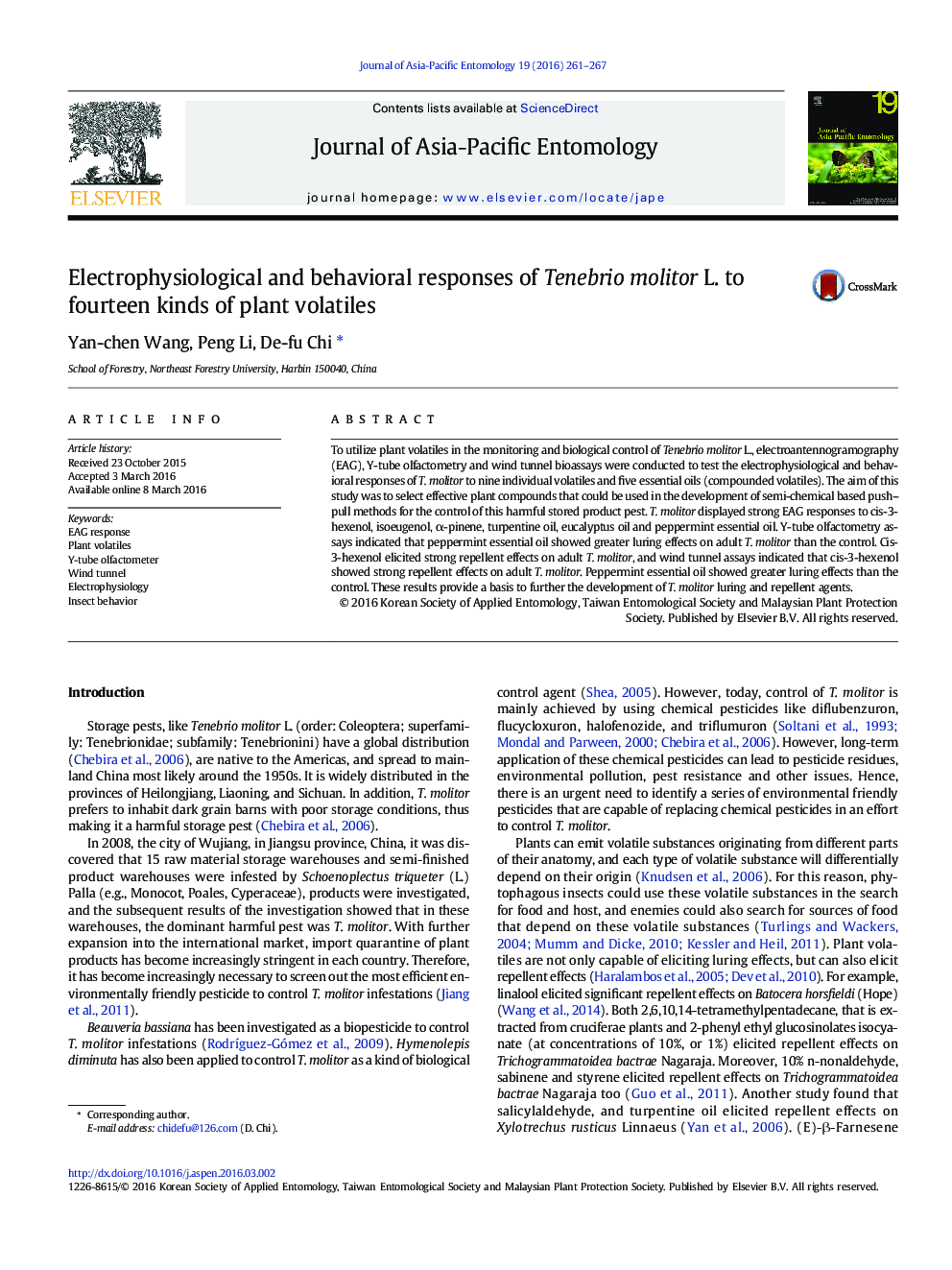| Article ID | Journal | Published Year | Pages | File Type |
|---|---|---|---|---|
| 6379984 | Journal of Asia-Pacific Entomology | 2016 | 7 Pages |
â¢T. molitor showed EAG responses to 3 kinds of volatiles and 3 kinds of essential oil.â¢T. molitor showed luring effects to peppermint oil in Y-tube olfactometry assays.â¢T. molitor showed repellent effects to cis-3-hexenol in wind tunnel assays.â¢T. molitor showed repellent effects to cis-3-hexenol in Y-tube olfactometry assays.â¢T. molitor showed luring effects to peppermint oil in wind tunnel assays.
To utilize plant volatiles in the monitoring and biological control of Tenebrio molitor L., electroantennogramography (EAG), Y-tube olfactometry and wind tunnel bioassays were conducted to test the electrophysiological and behavioral responses of T. molitor to nine individual volatiles and five essential oils (compounded volatiles). The aim of this study was to select effective plant compounds that could be used in the development of semi-chemical based push-pull methods for the control of this harmful stored product pest. T. molitor displayed strong EAG responses to cis-3-hexenol, isoeugenol, α-pinene, turpentine oil, eucalyptus oil and peppermint essential oil. Y-tube olfactometry assays indicated that peppermint essential oil showed greater luring effects on adult T. molitor than the control. Cis-3-hexenol elicited strong repellent effects on adult T. molitor, and wind tunnel assays indicated that cis-3-hexenol showed strong repellent effects on adult T. molitor. Peppermint essential oil showed greater luring effects than the control. These results provide a basis to further the development of T. molitor luring and repellent agents.
Graphical abstractEAG response of Tenebrio molitor to individual volatiles.Download full-size image
